Chhau mask-making dates back to the era of King Madan Mohan Singh Deo of Baghmundi – GetBengal story
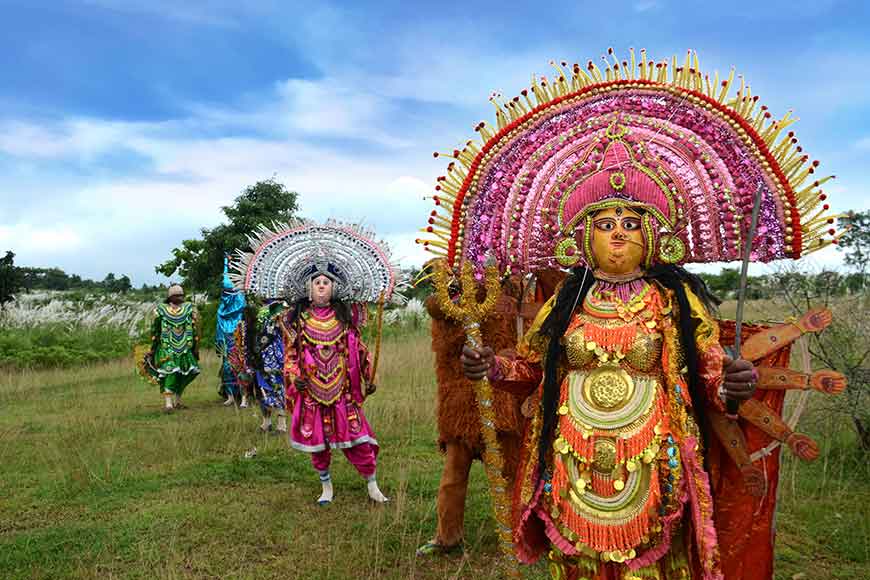
To the people of Charida, a sleepy village of Bengal, masks mean ancient tribal Chhau masks, that are colourful and a work of art. It is believed Chhau dance originated in the soldiers’ barracks (chhauni) of the past when Rarh (part of Bengal, Bihar and Odisha) was a mighty military nation. Three subgenres of the dance are prevalent, based on the place of origin - Seraikella Chhau, Mayurbhanj Chhau and Purulia Chhau. The dances are still very popular and performed during specific tribal festivals in West Bengal.
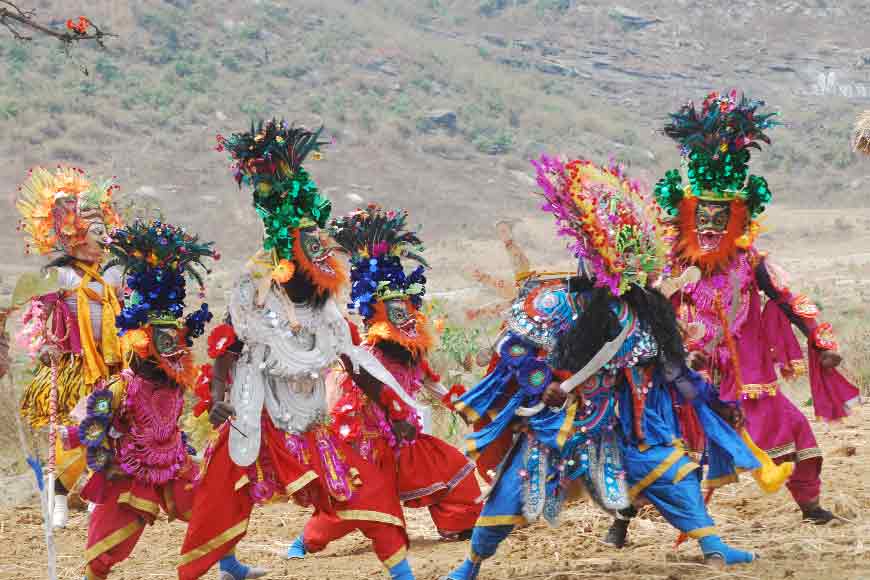 A Show of colours
A Show of colours
Charida, also known as Mukhosh Para is a small hamlet, located on the beautiful foothills of Ayodhya Hills in Purulia district. About 500 families in the Baghmundi block, some 300 km from Kolkata, are involved in making the large and colourful Chhau masks. Charida, about five km from Baghmundi, is home to 150 artist families involved in mask making.
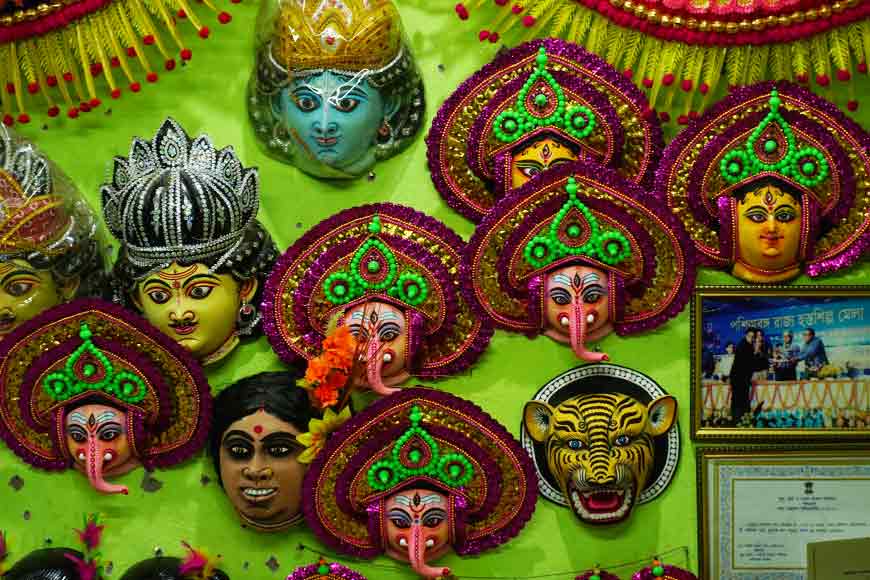 Pick a mask or two
Pick a mask or two
In 2010 the Chhau dance was inscribed in the UNESCO’s Representative List of the Intangible Cultural Heritage of Humanity and in 2018, this traditional rural craft, which is an integral component of Chhau dance, was awarded the GI (Geographical Indication) tag. It is believed that this mask-making tradition started during the era of King Madan Mohan Singh Deo of Baghmundi. Predominantly surrounded by thick vegetation, such vibrant masks were made to lift up the morale and spirits of locals and the violent art-form was aligned not only to ward off the dangers of the wild, but to keep them agile and alert to lead lives in an inhospitable terrain. The masks are made mostly around Gods and Goddesses and the characters from epics when the ‘Chhau’ dance is themed around stories from the same or take forms of wild animals when the art-form depicts the struggle between man and beast.
Also read : Masks – Human Alter Ego
Mostly made of paper pulp and clay, Chhau masks are often huge in size but not heavy since they are worn by the performers during the show. The clay moulds are first hand-made and dried in the sun (known as ‘mati gora’). They are then layered with powdered ashes. Depending on the type of mask, 8-15 layers of paper moistened with gum made of flour is applied on the mould. Thereafter, a thin layer of earth (‘bele mati’) is applied on top and then the same is polished with wood to carve out the features in the mask. Thereafter, it is left to bake in the sun. Once dry, ‘Khori Mati’ (soil rich with calcium) is applied on the surface. After this, the masks are painted in accordance with the characters that the dancers will depict wearing the masks. Dark yellow and bright orange are used to delineate the heavenly deities, black or dark green colours are used for the antagonists, that is, the demons. These masks are shown to have thick, bushy moustaches and protruding eyes and teeth. Foils, beads, pith works, paper flowers, feathers of birds are used to decorate the masks. Since these masks are always baked in sun and never in fire, cloudy and rainy days in between can undo all the efforts of the artisans as the paper pulp tend to degenerate if not kept in the sun immediately after it is applied.
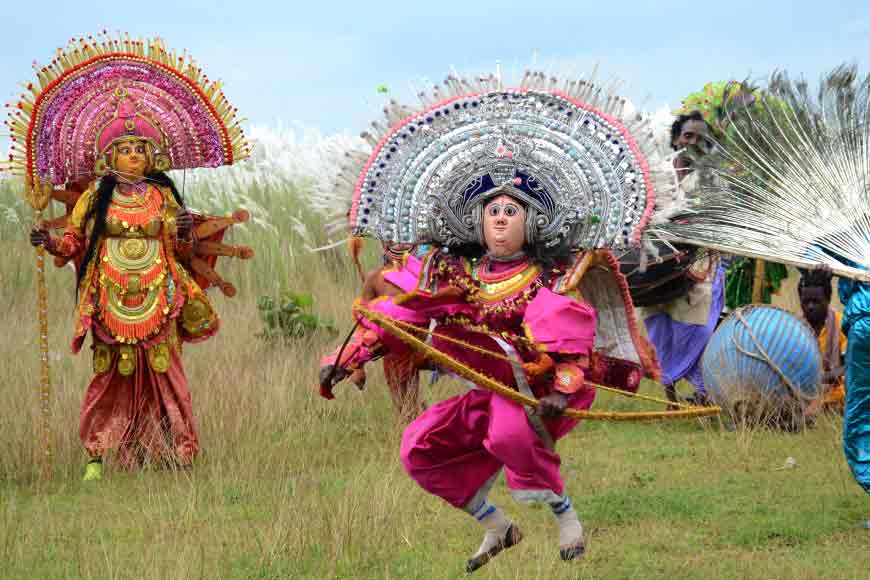 The Act
The Act
While they create vibrant looks and moods for the people to soak in the colours of the art, the artisans themselves strive hard to make ends meet. They have to put up with the rising costs of raw materials, lack of promotion of their products and the multiple intermediaries whose palms have to be greased generously to get their masks reach the buyers. These factors leave them with very little surplus cash for their sustenance.
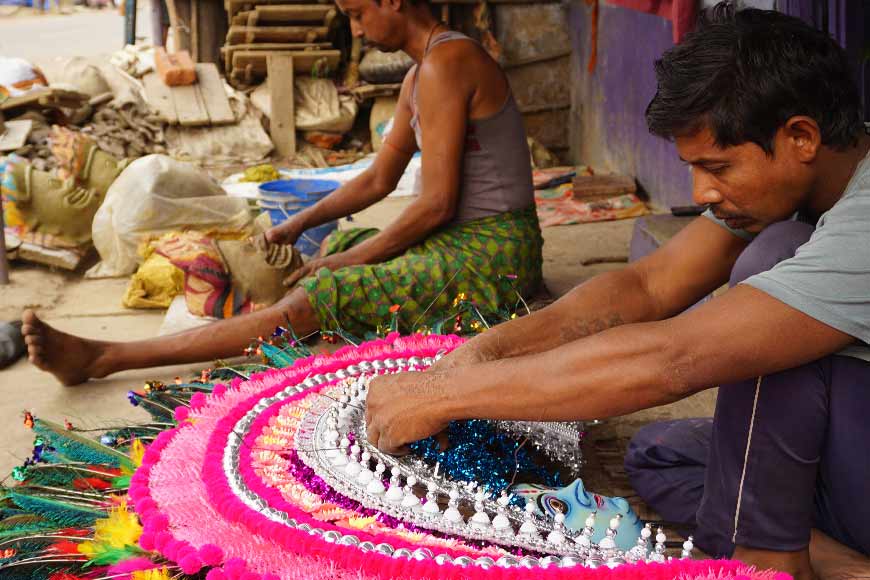 The makers
The makers
For most of the residents of Charida, mask making is a profession handed down to them by their forefathers. That is the only work they are proficient at doing for sustenance and hence, they cannot migrate to richer pastures in search of jobs. However, of late their condition seems to be improving with the popularity of Chhou dance reaching beyond national borders. This naturally translates into more work for the mask makers. The artists have diversified into making small masks as showpieces which are in great demand among tourists. They buy these replicas of large masks to adorn their homes. A number of artisans have been abroad as part of the Indian delegation to showcase their creations in handicrafts shows and fairs and have received accolades from viewers.
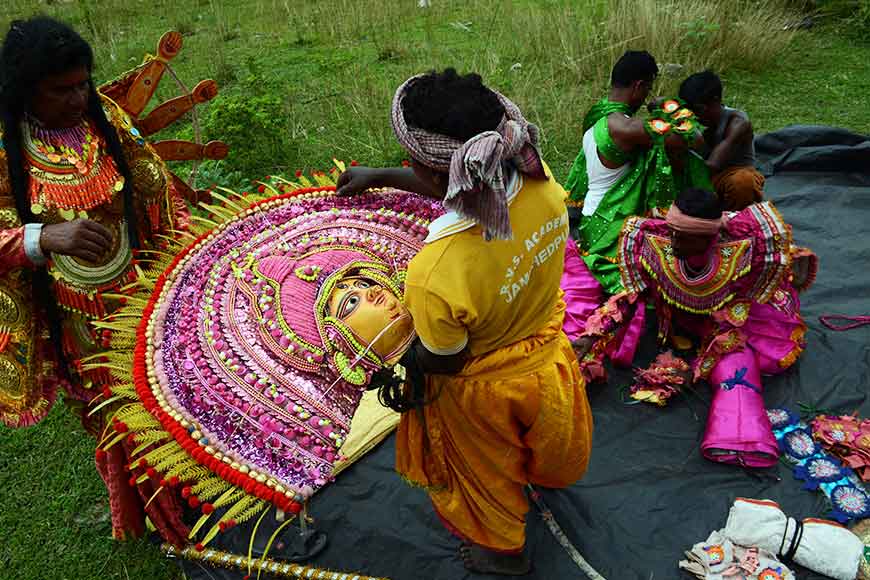 Work in Progress
Work in Progress
Charida village is a must-see tourist destination too. Located at the foothills of Ayodhya Hills, it is 5 kilometers from Baghmundi and 29 kilometers from Balarampur. The nearest railway station is Balarampur which is just 16 kilometers from Charida. From Kolkata you can reach Purulia town by train, bus or car and then to Baghmundi or Balrampur from where you can plan your visit to Charida to see the artisans at work.









